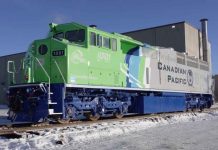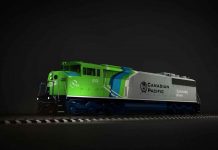 THUNDER BAY – OPINION – Cheeriest Holiday greetings to Thunder Bay from one of your admirers in the cold, damp—but not yet frozen—American Southland!
THUNDER BAY – OPINION – Cheeriest Holiday greetings to Thunder Bay from one of your admirers in the cold, damp—but not yet frozen—American Southland!
It’s said that talk is cheap, but if the right folks talk to each other as a result of this greeting, a big smile might replace the grim aspect of the Ghost of Christmases Yet To Come as he strolls the Ontario shoreline.
For a long time, the NetNewsLedger has shared a vision that we cherish here in Mooresville, North Carolina. The vision is that Thunder Bay may one day be a North American manufacturing home for the next generation of electric passenger trains, Hydrogen Multiple Units (hydrail HMUs).
To our frustration, and perhaps yours, every time the stars have seemed about to align for this devoutly-to-be-wished consummation, the economy has hiccuped or the guard has changed and the cogs have failed to engage.
But a new chance may be emerging.
Try this Internet search argument: salzgitter+trainsets+forty+gazette
Next, try this one: alstom+”emission-free”+passengers+germany
If all goes well, your first hit will be a 24 September 2014 article in the UK’s online Railway Gazette: “Fuel cells to power regional trainsets”. The dateline is Germany, at the Innotrans transportation trade show. The opening line says that “Alstom Transport hopes to have 40 fuel cell-powered regional trains in commercial service on regional lines in Germany by 2020…” They will be spread across several states (Länder) in Northern Germany. The second search argument brings up Alstom Transport’s related news release.
Now, I have not heard this part from any other source, but I’ll bet the hydrogen that propels these forty Alstom Hydrogen Multiple Units through Germany will be made from some of that large surplus of wind turbine energy which their power grid sheds in the middle of the night.
How could this possibly be good news for Thunder Bay?
First, the fact that “forty” trains—not one or two test prototypes—are announced says that hydrail has at last crested the acceptance hill and begun to gather momentum. Second, the sad-but-real political pressure “not to do anything first” has now been bled-off.
Canada has some of the oldest and deepest national bragging rights to hydrail’s origins. In a Val D’Or gold mine, the first hydrail mining locomotive was tested. Canada helped fund its development as well.
Around 1999 Dr. Alistair Miller, of Atomic Energy of Canada Limited’s Chalk River Laboratories, wrote a paper that sparked creation of the annual International Hydrail Conferences and our Mooresville Hydrail Initiative. From Toronto to Turkey, these “IHCs” have brought together hydrail scientists, engineers, government agencies and industries from around the world (visit www.hydrail.org).
On the Left Coast of Canada, the Frazer Valley Heritage Railway Society in Surrey, BC, has been a lead player in hydrail advocacy for over a decade (search FVHRS).
And, most important from my perspective, last year in Toronto—under the leadership of Robert Stasko of Science Concepts International and Ryerson University—Canada hosted the biggest International Hydrail Conference ever held, with well over a hundred participants (www.hydrail.org/hydrail2013).
Here’s how the news from Germany can be good for Thunder Bay railway manufacturing.
While Alstom and Bombardier are competitors in some markets, Alstom also has a major non-rail energy presence in Ontario. If Thunder Bay’s Bombardier works can partner with Alstom’s Salzgitter railway works in Germany to share the costs of developing the wireless Hydrogen Multiple Unit electric trains, TBO can gain a five-year lead marketing in the next generation of zero-carbon railway technology.
While the European hydrail market is intended to extend non-petroleum railways beyond compact Germany’s mostly electrified trackage, less than 1% of North American tracks are electrified today. And, at about US$10 million per mile in urban areas, it’s highly doubtful that as much as 1% ever will be electrified, except via wireless hydrail.
This, of course, is a conflicting issue for Canada.
Petroleum exports, some of which power diesel locomotives, are a key element of Canada’s international trade. And, if the climate-concerned are proved wrong, that will continue indefinitely.
But even in that case, there are enough emissions-averse, densely-populated areas in North America to support a very large intercity hydrail passenger train network and market.
As one who has been to ten countries—from Canada to China—in as many years on hydrail visits, I know the technology is here to stay and grow. Strictly speaking, I have no horse in Thunder Bay’s race. But, as a retired futurist and planner, I love a great opportunity, driven by a really big paradigm shift.
If the right folks talk to each other soon, one is at hand in Thunder Bay.
Stan Thompson




